-
ABOUT US
-
ACADEMICS
Curriculum Program
Departments
- English
- High School Chinese
- Primary and Junior School Chinese.
- High School Mathematics
- Middle School Mathematics
- Primary School Mathematics
- Music and Fine Arts
- Physical Education
- Physics
- Chemistry
- History and Geography
- Physical Science and Optional courses Department
- Middle School Biology
- High School Biology
- Social Sciences
- Computer Science
- Courses in Primary School
Achievements and Matriculations
College Counseling
Science & Technology Innovation Contest
Subject Competition
-
ARTS
-
ATHLETICS
-
AT SHSID
SHSID ∣ TIMES
PTSA
Club Exhibition
- 龙吟社
- Live 2 Drama
- Choir
- Hip-pop Dance Club
- The Primary School Dance Troupe
- Symposiums Club
- Biology Workshop
- You Shan
- VEX Robotic
- Peking Opera Club
- Baseball Club
- Model United Nations
- The World Scholar’s Cup
- Future Problem Solving Club
- United States Academic Pentathlon
- OM Club
- AMC Club
- Music for Patients
- SHSID Gazette
- Smile Charity
- Cultural Moments
- SciAcademy
- Stem Doge Alliance
- Chinese Debate Club
- IAA
- Mock Trial Club
- Zhengming Club
- Art-to-zine
- Bananaheads
- Electronics
- Furry Friends
- GT-Racing
- MCG Philharmonics
- Village Radio
- IMMC Club
- Creative Design and Intelligent Fabrication
- Future City Research Project
- ECOCAP
- AdvocaSEA
- SPDC
- Medishine
- Floorball Club
- Animusic MTC
- Wings Up
Health and Wellness
Campus Safety
Cafeteria Service
-
ADMINISTRATION
-
ADMISSIONS
-
ALUMNI
Alumni Information
Honors Students
- Class of 2025
- Class of 2024
- Class of 2023
- Class of 2022
- Class of 2021
- Class of 2020
- Class of 2019
- Class of 2018
- Class of 2017
- Class of 2016
- Class of 2015
- Class of 2014
- Class of 2013
- Class of 2012
- Class of 2011
- Class of 2010
- Class of 2009
- Class of 2008
- Class of 2007
- Class of 2006
Who Studied at SHSID
SHS Foundation
-
DOCUMENTS
Primary School Math Department: An Exciting Journey of Mathematical Exploration
As September comes to an end and October begins, the students from grades four and five at the Puxi campus are embarking on an exciting journey of mathematical exploration. Today, our classroom transcends mere formulas and numbers; instead, we’re diving into vibrant stories that showcase the charm of mathematics in daily life. Through these stories, we hope to inspire their thinking and ignite their passion for math.
Math is a highly abstract language, but in these stories, it becomes a tangible sword in the hands of the protagonists, helping them solve real problems. In "Sir Cumference and the Off-the-Charts Dessert," the children are encouraged to discover and pose math questions to help Pia’s and Bart’s dessert be selected for the annual Harvest Festival. They explore what presentation style is most captivating and how to collect and analyze voting results to choose the most popular dessert. These questions encourage them to use creative thinking to solve problems. Pia and Bart use different methods to showcase their desserts—Pia arranges colorful candies around the edge of her pie like a pie chart, while Bart stacks cookie jars to create a 3D bar graph—the children are prompted to think critically and identify the strengths and weaknesses of each approach.
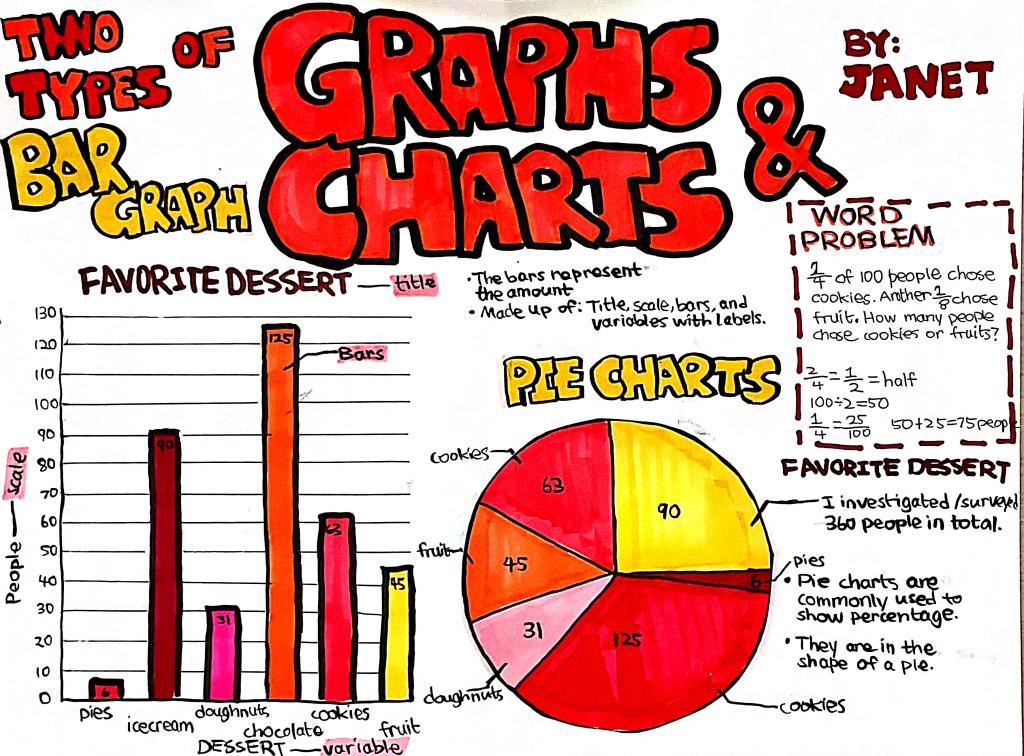
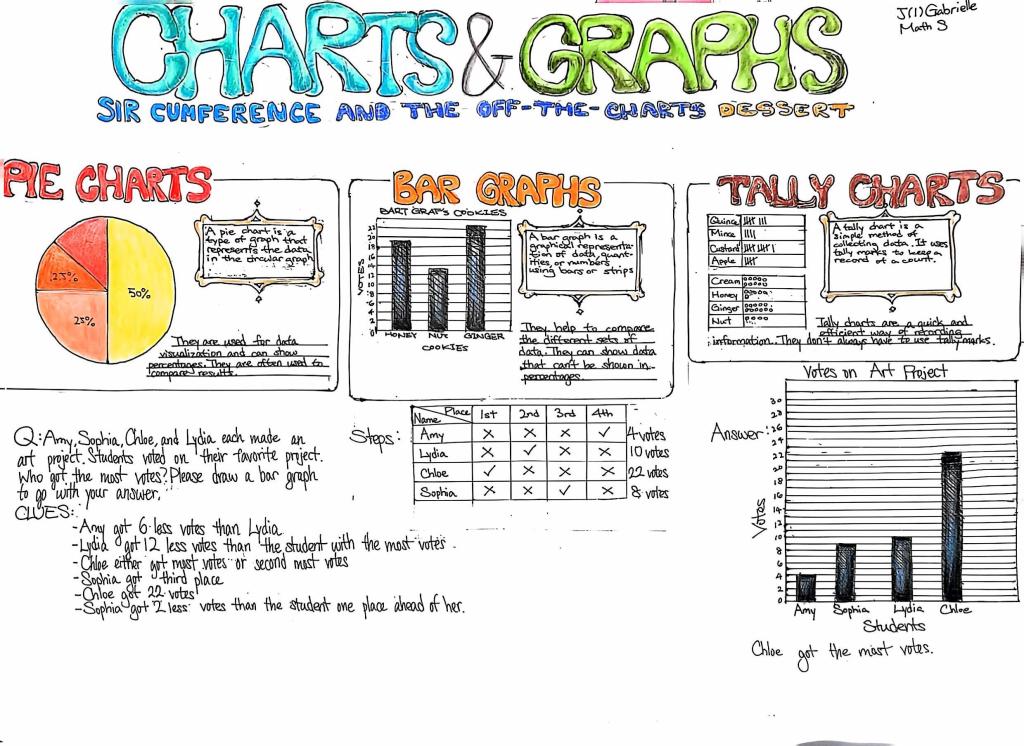
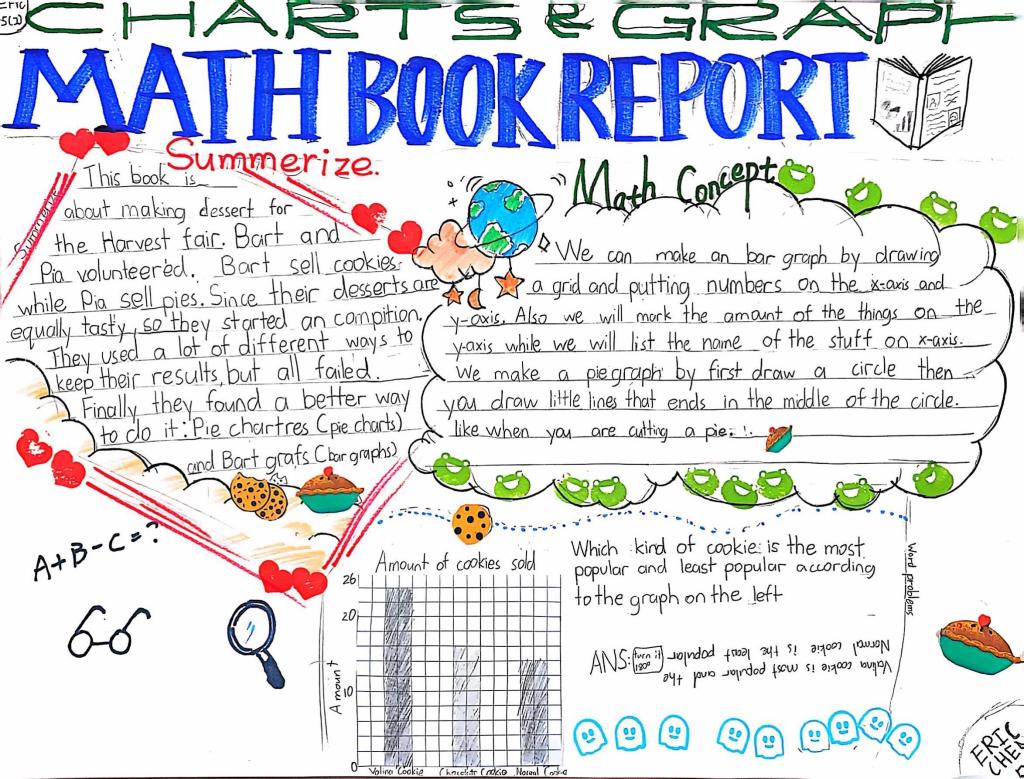
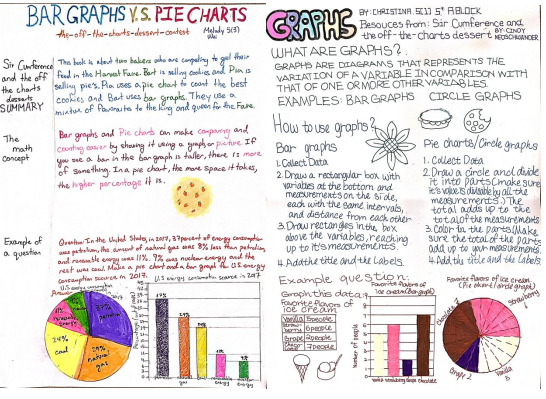
Math is not just a subject, it exists everywhere in our lives. In "Math Curse," the lighthearted and humorous stories help children see the close connection between math and everyday experiences. The various math problems and clever solutions presented in the book encourage kids to develop their logical thinking and problem-solving skills to solve their problems in daily life. The children also get the idea to create posters, choose a math concept that interests them, or transform everyday dilemmas into math problems and find solutions with steps and explanations.
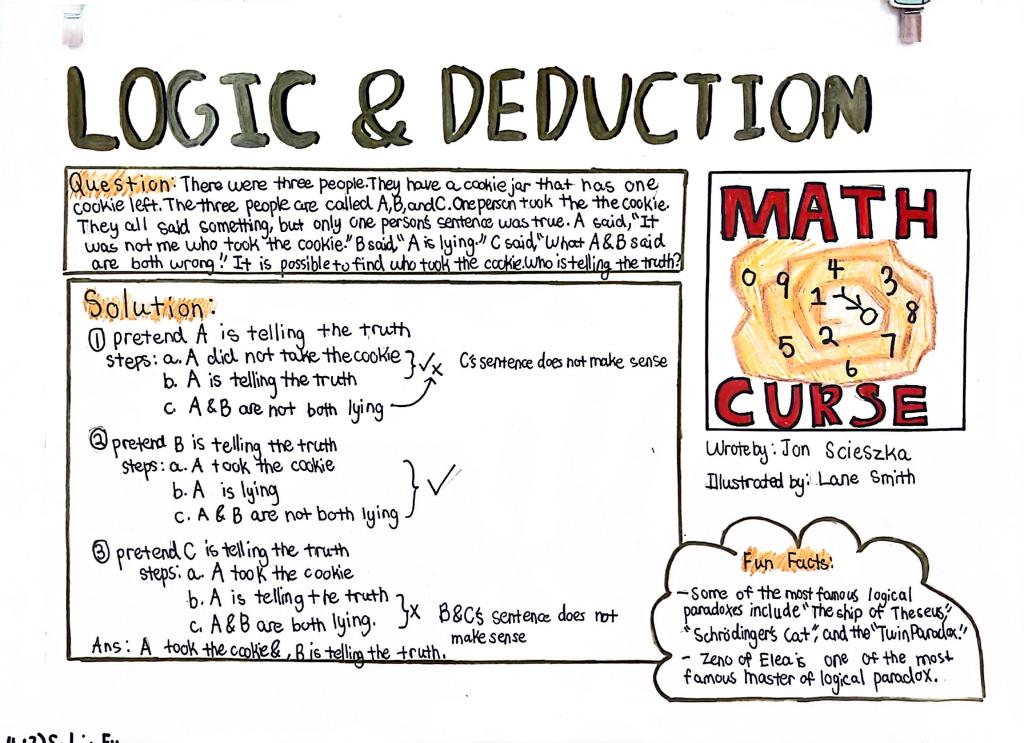
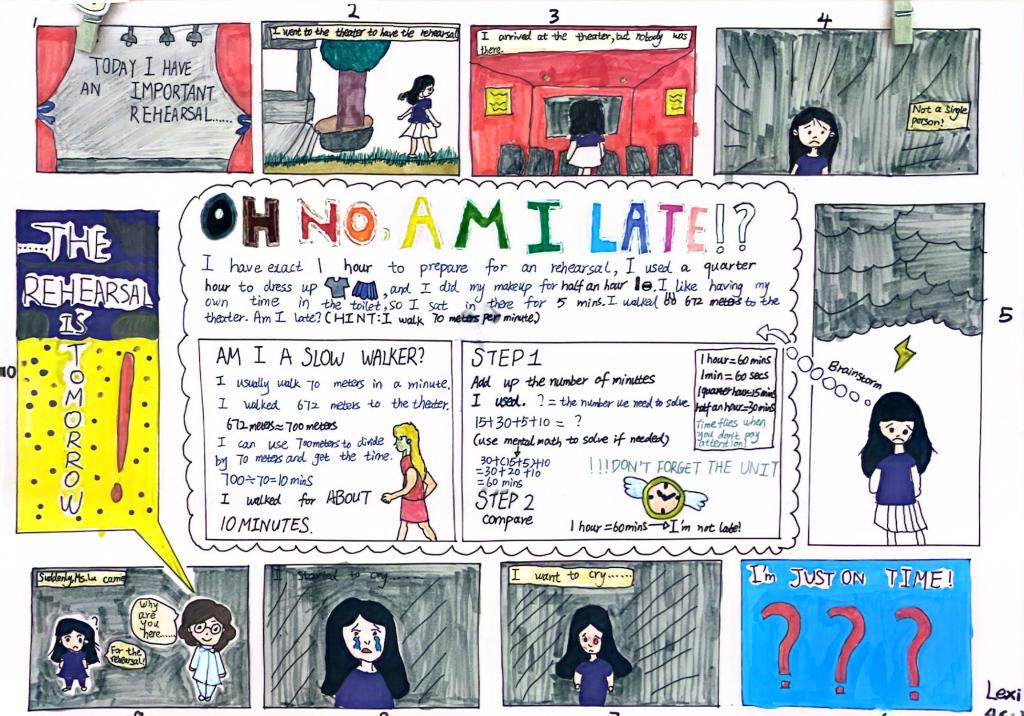
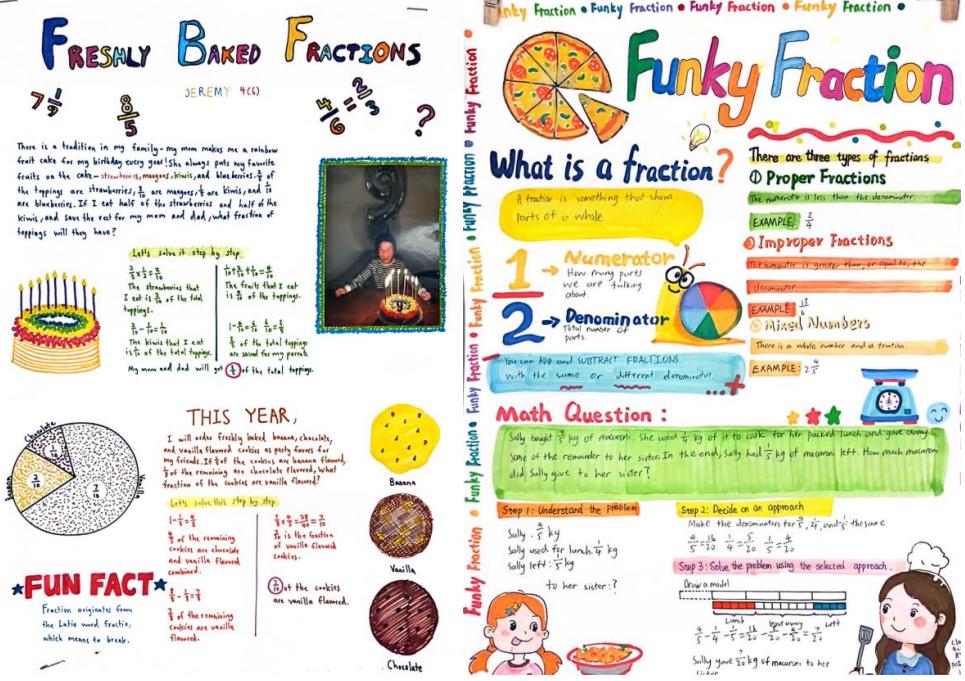
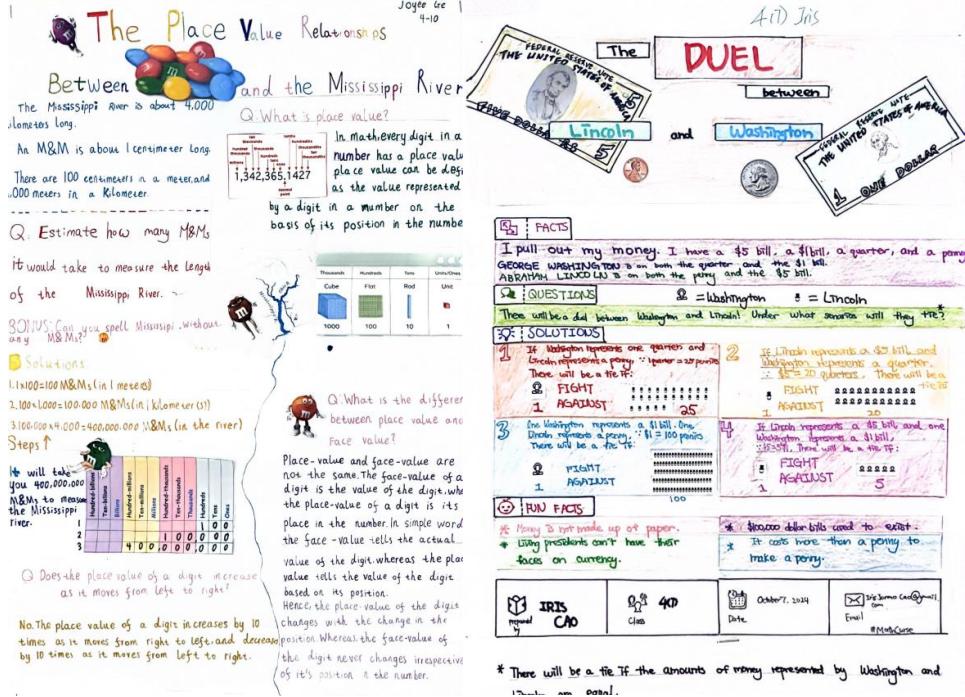
Through this vibrant reading experience, the children subtly develop their critical thinking skills and confidence in problem-solving. They understand that math is not just formulas in a textbook but a valuable tool that helps them analyze and understand the world around them.
Math may seem calm and serious, but after exploring its history and fairy tales, it becomes vibrant and closely connected to everyday life. The origins of mathematical units feel like an exciting adventure, as children trace the stories behind these units in "Millions to Measure." After reading, they discover how units have evolved with time and across different countries, and how they have been defined, overturned, unified, and used in various contexts. With playful language and amusing illustrations, mathematical knowledge becomes delightful and engaging. Each mathematical unit stands as a witness to history, embodying the essence of human wisdom. By creating posters to showcase their understanding, the children use their creativity to challenge their peers, reinforcing their learning and confidently presenting their accomplishments.
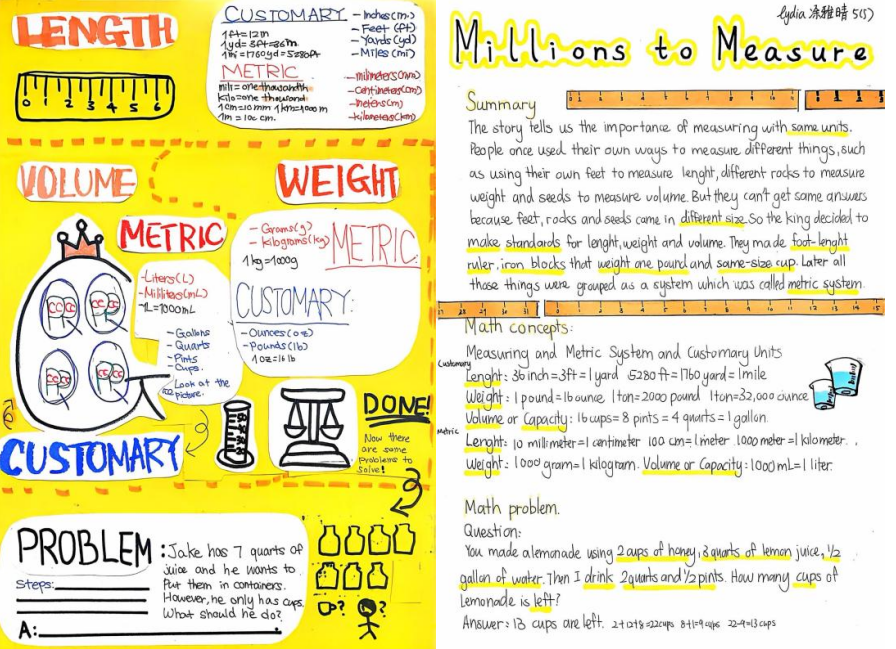
In "One Hundred Hungry Ants," children discover the connection between "making an organized list", “division” and fairy tales. This book not only presents the amusing scenario of 100 ants marching in different formations but also teaches kids how to explore various combinations and arrangements. The unexpected blend of complex mathematical logic with lighthearted text makes this book particularly beloved by the children. After reading, some even followed the author’s lead, using their math knowledge to create their mathematical fairy tales. The reading experience increases their interest in math, allowing them to enjoy math further and reinforce their understanding of the subject through storytelling.
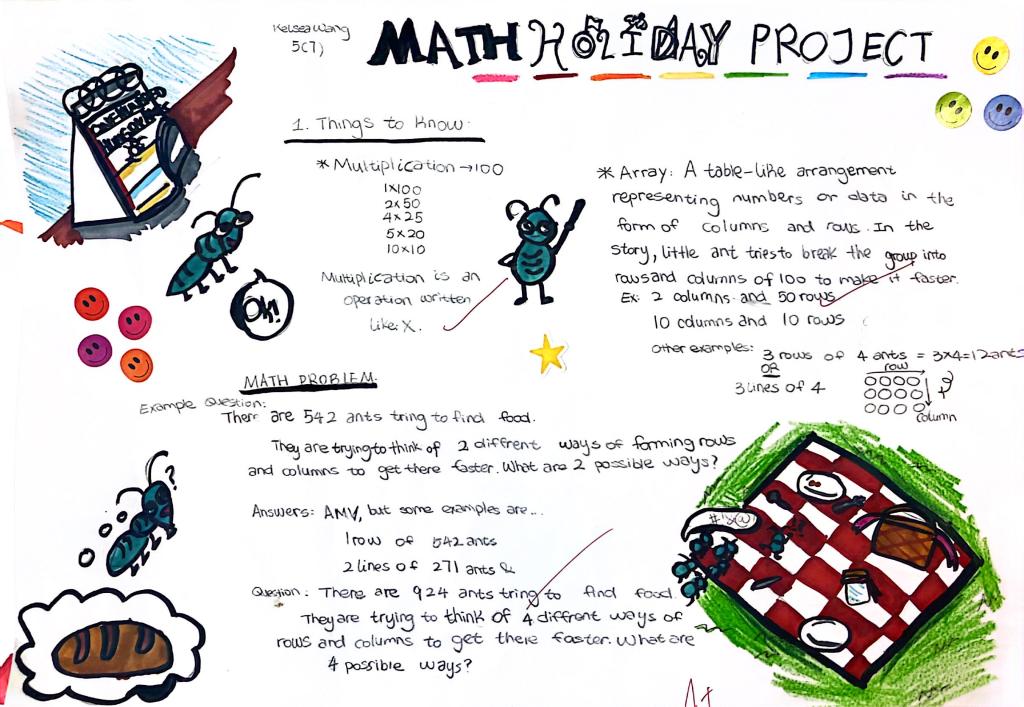
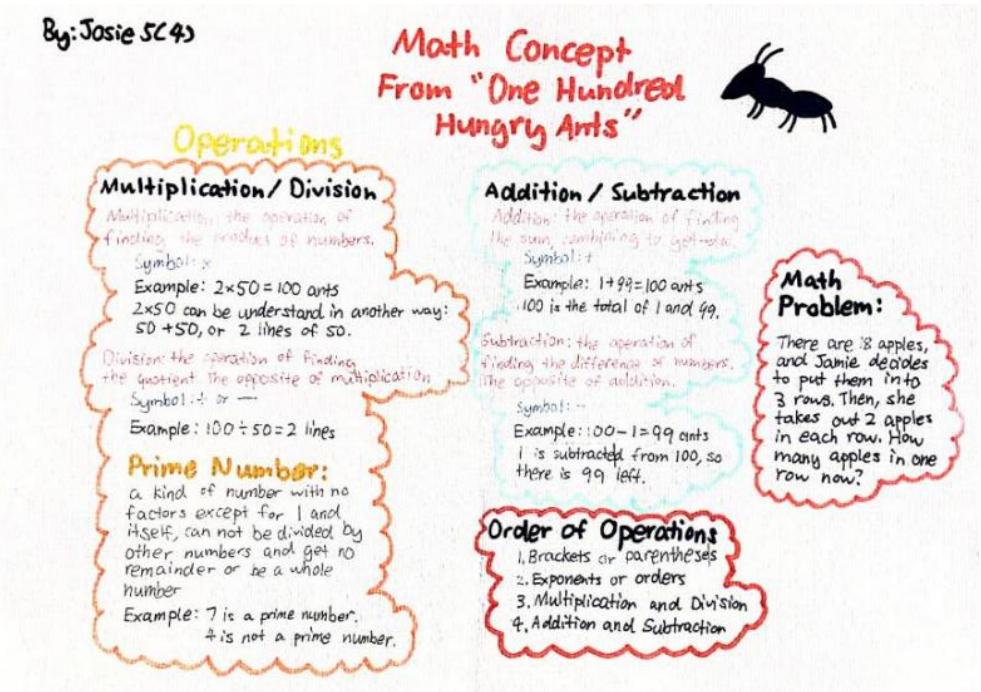
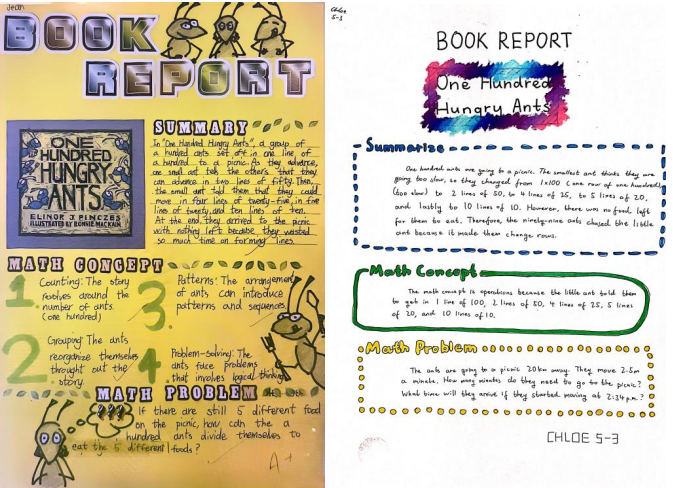
Written by Jie Zhou
Pictures by G4-G5 Math Teachers
Edited by Cong Luo, Judah Kuhn